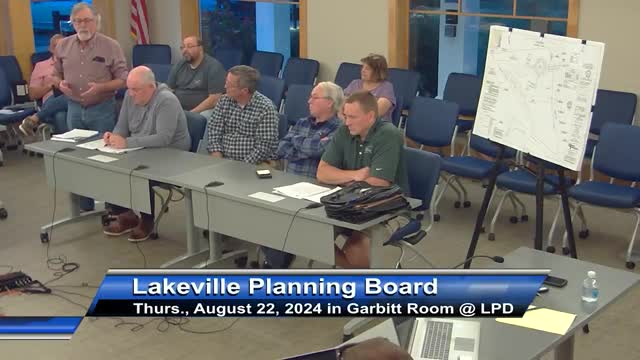Concerns rise over drainage system amid extreme weather events
August 24, 2024 | Town of Lakeville, Plymouth County, Massachusetts
This article was created by AI summarizing key points discussed. AI makes mistakes, so for full details and context, please refer to the video of the full meeting. Please report any errors so we can fix them. Report an error »

In a recent government meeting, officials discussed the design and capacity of a local drainage system, which has been engineered to handle a 100-year storm event. This design standard aims to manage extreme rainfall, typically defined as 7.6 inches over a 24-hour period. However, concerns were raised regarding the adequacy of this system in light of increasingly severe weather patterns, as evidenced by a recent storm in Connecticut that delivered 16 inches of rain.
Participants in the meeting expressed worries about the potential for overflow from the drainage pond, particularly how much rainfall it could handle before water begins to flow into nearby wetlands and Long Pond, which is already experiencing runoff issues. The discussion highlighted the narrow margin of error in the system's design, with estimates suggesting that even a slight increase in rainfall could lead to significant overflow problems.
Officials emphasized the importance of maintaining a foot of freeboard—an additional height above the maximum water level—to mitigate overflow risks. However, questions remained about the feasibility of enhancing the system's capacity to accommodate future weather extremes, as climate change may lead to more frequent and intense storms.
Additionally, concerns were raised regarding the proximity of the drainage pond to neighboring septic systems, with discussions about potential impacts on leach fields during heavy rainfall events. Officials reassured attendees that regulations regarding setbacks from wetlands and roadways are in place to minimize risks.
The meeting concluded with plans to consult the fire department for further input and to continue discussions in a follow-up meeting scheduled for September 12. The ongoing dialogue reflects a community grappling with the challenges of adapting infrastructure to meet the demands of a changing climate.
Participants in the meeting expressed worries about the potential for overflow from the drainage pond, particularly how much rainfall it could handle before water begins to flow into nearby wetlands and Long Pond, which is already experiencing runoff issues. The discussion highlighted the narrow margin of error in the system's design, with estimates suggesting that even a slight increase in rainfall could lead to significant overflow problems.
Officials emphasized the importance of maintaining a foot of freeboard—an additional height above the maximum water level—to mitigate overflow risks. However, questions remained about the feasibility of enhancing the system's capacity to accommodate future weather extremes, as climate change may lead to more frequent and intense storms.
Additionally, concerns were raised regarding the proximity of the drainage pond to neighboring septic systems, with discussions about potential impacts on leach fields during heavy rainfall events. Officials reassured attendees that regulations regarding setbacks from wetlands and roadways are in place to minimize risks.
The meeting concluded with plans to consult the fire department for further input and to continue discussions in a follow-up meeting scheduled for September 12. The ongoing dialogue reflects a community grappling with the challenges of adapting infrastructure to meet the demands of a changing climate.
View full meeting
This article is based on a recent meeting—watch the full video and explore the complete transcript for deeper insights into the discussion.
View full meeting
